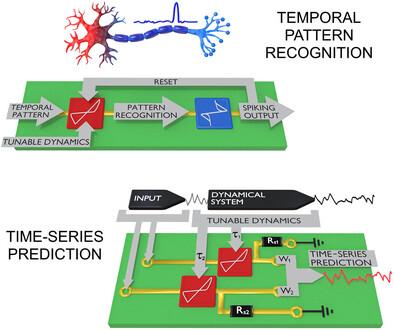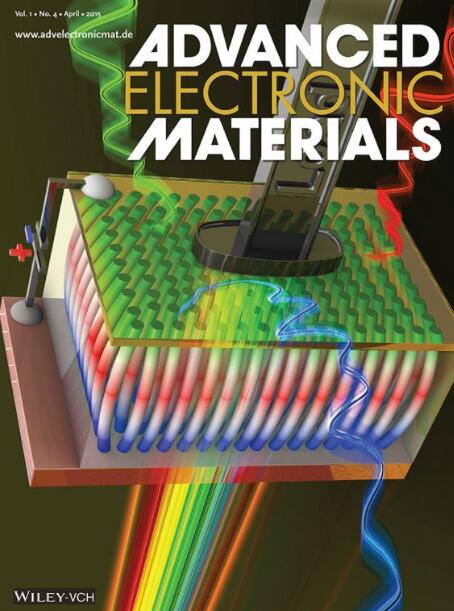Neural Information Processing and Time‐Series Prediction with Only Two Dynamical Memristors
IF 5.3
2区 材料科学
Q2 MATERIALS SCIENCE, MULTIDISCIPLINARY
引用次数: 0
Abstract
Memristive devices are commonly benchmarked by the multi‐level programmability of their resistance states. Neural networks utilizing memristor crossbar arrays as synaptic layers largely rely on this feature. However, the dynamical properties of memristors, such as the tailorable response times arising from the exponential voltage dependence of the resistive switching speed remain largely unexploited. Here, an information processing scheme which fundamentally relies on the latter is proposed. Simple dynamical memristor circuits capable of solving complex temporal information processing tasks are realized. A scheme is presented in which a single non‐volatile meristor and a series resistor can perform temporal pattern recognition tasks, such as the discrimination of sub‐threshold and super‐threshold voltage pulses, or the identification of neural spikes buried in high noise. By coupling to an oscillator circuit of a volatile Mott memristor, a complete neural circuit is realized that fires an output pulse upon signal detection and resets itself in a fully autonomous manner. Furthermore, a time series prediction circuit is implemented using a dynamic layer of only two memristors and a readout layer based on the linear combination of their output signals. This scheme can learn the operation of an external dynamical system and predict its output with high accuracy.

仅用两个动态记忆电阻器的神经信息处理和时间序列预测
忆阻器件通常以其电阻状态的多级可编程性作为基准。神经网络利用忆阻交叉栅阵列作为突触层很大程度上依赖于这一特性。然而,记忆电阻器的动态特性,如由电阻开关速度的指数电压依赖性引起的可定制响应时间,在很大程度上仍未得到开发。本文提出了一种从根本上依赖于后者的信息处理方案。实现了简单的动态忆阻电路,能够解决复杂的时间信息处理任务。提出了一种由单个非易失性晶闸管和串联电阻器实现短时模式识别的方案,如区分亚阈值和超阈值电压脉冲,或识别埋在高噪声中的神经尖峰。通过与一个易失性莫特忆阻器的振荡器电路耦合,实现了一个完整的神经电路,该电路在信号检测时发射输出脉冲并以完全自主的方式自我复位。此外,使用仅由两个忆阻器组成的动态层和基于其输出信号线性组合的读出层实现了时间序列预测电路。该方案可以学习外部动力系统的运行,并以较高的精度预测其输出。
本文章由计算机程序翻译,如有差异,请以英文原文为准。
求助全文
约1分钟内获得全文
求助全文
来源期刊

Advanced Electronic Materials
NANOSCIENCE & NANOTECHNOLOGYMATERIALS SCIE-MATERIALS SCIENCE, MULTIDISCIPLINARY
CiteScore
11.00
自引率
3.20%
发文量
433
期刊介绍:
Advanced Electronic Materials is an interdisciplinary forum for peer-reviewed, high-quality, high-impact research in the fields of materials science, physics, and engineering of electronic and magnetic materials. It includes research on physics and physical properties of electronic and magnetic materials, spintronics, electronics, device physics and engineering, micro- and nano-electromechanical systems, and organic electronics, in addition to fundamental research.
 求助内容:
求助内容: 应助结果提醒方式:
应助结果提醒方式:


